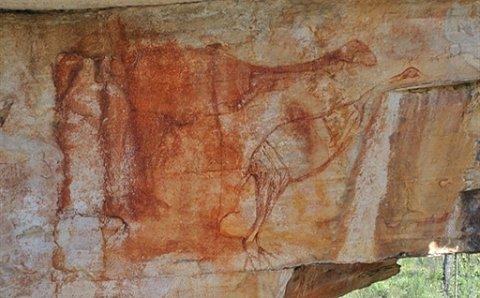
© Ben GunnThis undated archaeologist Ben Gunn handout photo received on May 31, 2010 shows an Aboriginal rock painting found in Australia's Arnhem Land; The red ochre painting shows two emu-like birds with their necks outstretched which are believed to show the megafauna species Genyornis.
A painting of two extinct birds found in northern Australia is believed to be one of the oldest pieces of rock art ever discovered. Scientists believe the image found on a remote plateau in the Northern Territory could be up to 40,000 years old.
The painting shows two giant birds that resemble a
genyornis, an ancient flightless creature that is believed to have become extinct in Australia more than 40,000 years ago.
If it was painted at a time when this mega fauna was still alive, as some experts believe, then it would be among the oldest pieces of rock art ever found.
Depicted in red ochre, the painting was discovered under a sandstone ledge in Arnhem Land east of Darwin, where ancient indigenous artistic traditions began. It was found by Aborigines two years ago, but due to its remote location has only now been surveyed by scientists.

